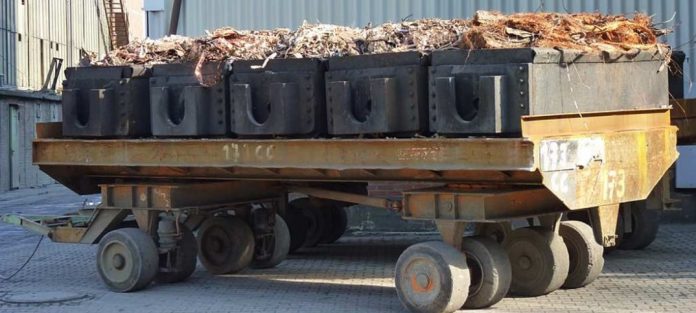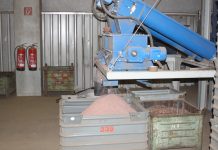The International Copper Study Group (ICSG) released preliminary data for November 2020 world copper supply and demand in its February 2021 Copper Bulletin. The Bulletin and ICSG online statistical database provide data, on a country basis, for copper mine, smelter, refined and semis production, copper refined usage, trade, stocks and prices.
The bulletin is available for sale (annual subscription €550/€850 for orders originating from/outside institutions based in ICSG member countries). Preliminary data indicates that world copper mine production fell by around 0.2% in the first eleven months of 2020, with concentrate production increasing by 0.4% and solvent extraction-electrowinning (SX-EW) declining by about 2.2%:
World mine production declined by 3.5% in April-May (y-o-y) as these two months were the most affected by the Covid-19 related global lockdown that resulted in temporary mine shutdowns/reduced production levels. However, world mine production started to recover in June as lockdown measures eased and the copper industry adapted to the stricter health protocols.
In Peru, stoppages resulting from the Covid-19 pandemic combined with operational issues/adverse weather that affected a few major mines, resulted in a 13.5% decline in mine output over the first eleven months of 2020 including a significant decline of 38% in April-May compared to the same period of 2019. However, as the Peruvian mining industry started to recover the extent of the reduction narrowed with October and November output being the highest of the year.
Covid-19 related constraints and other operational issues resulted in declines in production in other major copper mine producing countries, most notably Australia, Mexico and the United States. In Chile, the world’s biggest copper mine producing country, output was up by 2.5% in 1st half of 2020, recovering from production constraints in early 2019 (output had declined by 2.5% in 1st half 2019). However, with a 2.9% decline over July-November 2020 compared to the same period of 2019, accumulated output in the first 11 months of 2020 remained essentially unchanged.
Production in the Democratic Republic of Congo (DRC) and Panama increased significantly mainly due to the ramp-up of new mines or expansions. In Indonesia, production grew by 36% as output levels improved following the transition of the country’s major two copper mines to different ore zones in 2019.Preliminary data indicates that world refined copper production increased by 1.8% during the first eleven months of 2020 with primary production (electrolytic and electrowinning) up by 2.9% and secondary production (from scrap) down by 3.1%. Chilean electrolytic refined output increased by 28% as in the comparative period of 2019 production was negatively affected by temporary smelter shutdowns as a result of upgrades to comply with new environmental regulations.
After including a 7% decline in electrowinning production, total Chilean refined copper production (electrolytic and electrowinning) increased by 3.5%. Chinese refined production growth was negatively impacted by temporary shutdowns related to Covid-19 restrictions, tight scrap supply and constraints associated with concentrate imports and oversupply in the sulphuric acid market.
In Africa, refined production was up 5% in the DRC, due to the ramp-up of new or expanded SX-EW plants and by 32% in Zambia, where output has been recovering from smelters’ operational issues and temporary shutdowns in 2019. Indian refined output decreased by 19% primarily as a consequence of the temporary suspension of Birla Copper’s operations in March-May following a nationwide lockdown due to Covid-19. In the United States, temporary shutdowns and a long strike at Asarco’s operations led to a 12% decline in refined output. Japanese refined production rose by 6% mainly as a consequence of a recovery from a number of maintenance shutdowns over the same period of 2019.
Globally, constrained scrap supply due to the Covid-19 related lockdown and lower copper prices during the first half of the year have negatively impacted world secondary refined production. Preliminary data indicates that world apparent refined copper usage increased by 2.5% over the first eleven months of 2020:
The Covid-19 related global lockdown has had a notable negative impact on the world economy and subsequently on key copper end-use sectors in all regions. World ex-China refined copper usage was significantly impacted and is estimated to have declined by about 10%. Among the biggest copper using regions, refined usage fell by 15.5% in Japan, 12% in the EU, 5% in the United States and by about 11% in Asia (Ex-China). However, due to a 43% (1.25 million tonnes) increase in net refined copper imports,
Chinese apparent usage increased by 14% offsetting usage declines in other regions of the world. Real Chinese industrial usage was negatively impacted by the Covid-19 related production suspensions at semis fabricators early in the year and weaker external demand and should present lower growth than apparent usage. Preliminary world refined copper balance in the first eleven months of 2020 indicates an apparent deficit of about 590,000 t due to a strong Chinese apparent usage:
In developing its global market balance, ICSG uses an apparent demand calculation for China that does not take into account changes in unreported stocks [State Reserve Bureau (SRB), producer, consumer, merchant/trader, bonded]. To facilitate global market analysis, however, an additional line item – Refined World Balance Adjusted for Chinese Bonded Stock Changes – is included in the attached table that adjusts the world refined copper balance based on an average estimate of changes in bonded inventories provided by two consultants with expertise in China’s copper market. Over the first eleven months of 2020, the world refined copper balance, based on Chinese apparent usage (excluding changes in bonded stocks), indicated a deficit of about 590,000 t. The world refined copper balance adjusted for changes in Chinese bonded stocks indicated a market deficit of about 475,000 t.
Copper Prices and Stocks
Based on the average of estimates provided by two independent consultants, China’s bonded stocks are thought to have increased by about 115,000 t over the first eleven months of 2020compared to the year-end 2019 level. As of the end of January 2021, copper stocks held at the major metal exchanges (LME, COMEX, SHFE) totalled 207,597 t, a decline of 43.578 t (-17%) from stocks held at the end of December 2020. Stocks were down at the LME (-30%), at COMEX (-5%) and at SHFE (-11%). The average LME cash price for January was US$7,970.50 /t, up 9.8% from the December 2020 average of US$7,755.24 /t. The 2021 high and low copper prices through the end of January were US$ 8,146 /t (on 8th Jan) and US$ 7,778.50 /t (on 28th jan), respectively, and the year average was US$ 7,970.50 /t (29% above the 2020 annual average).
Please visit the ICSG website for further copper market related information.
Source: International Copper Study Group (ICSG)






